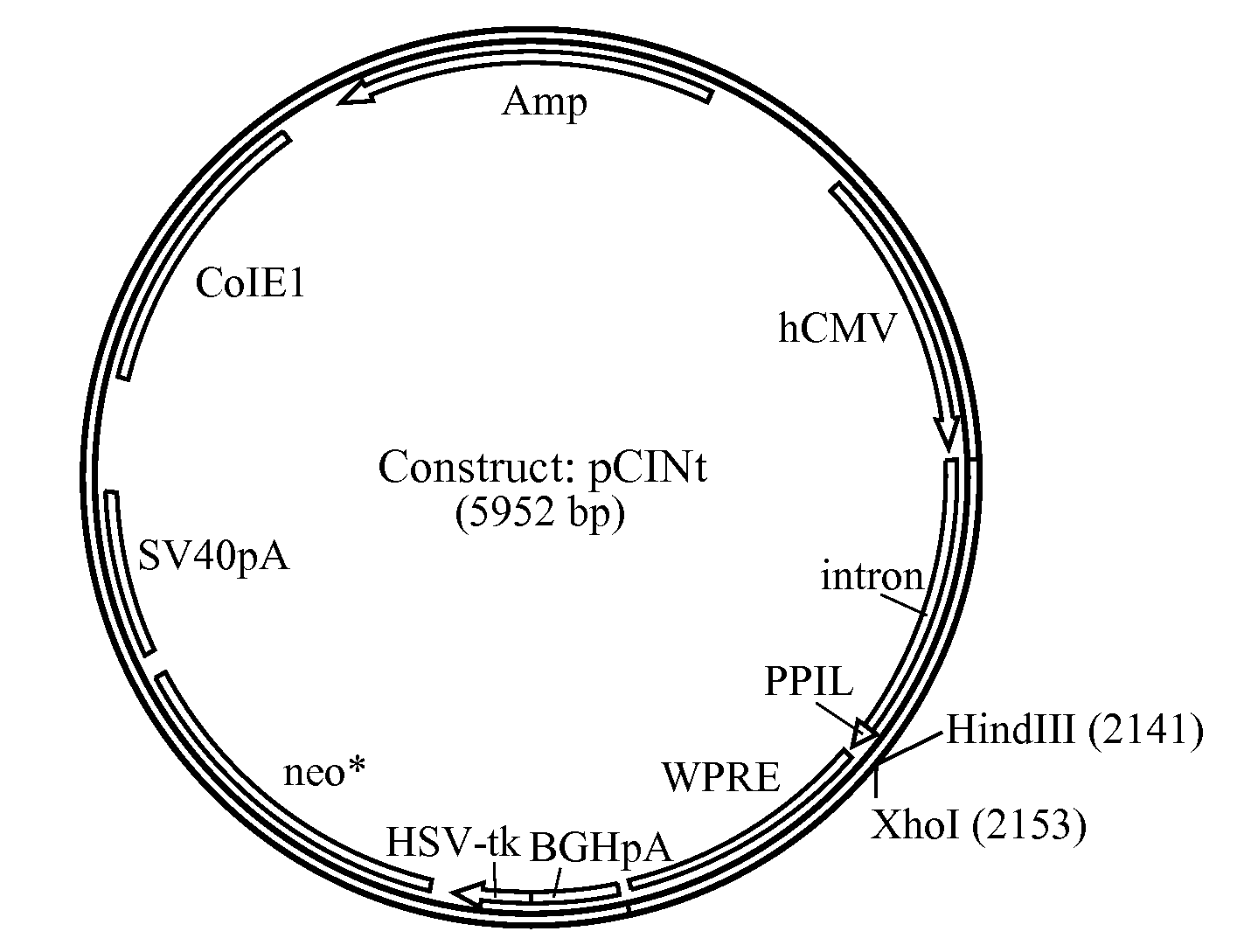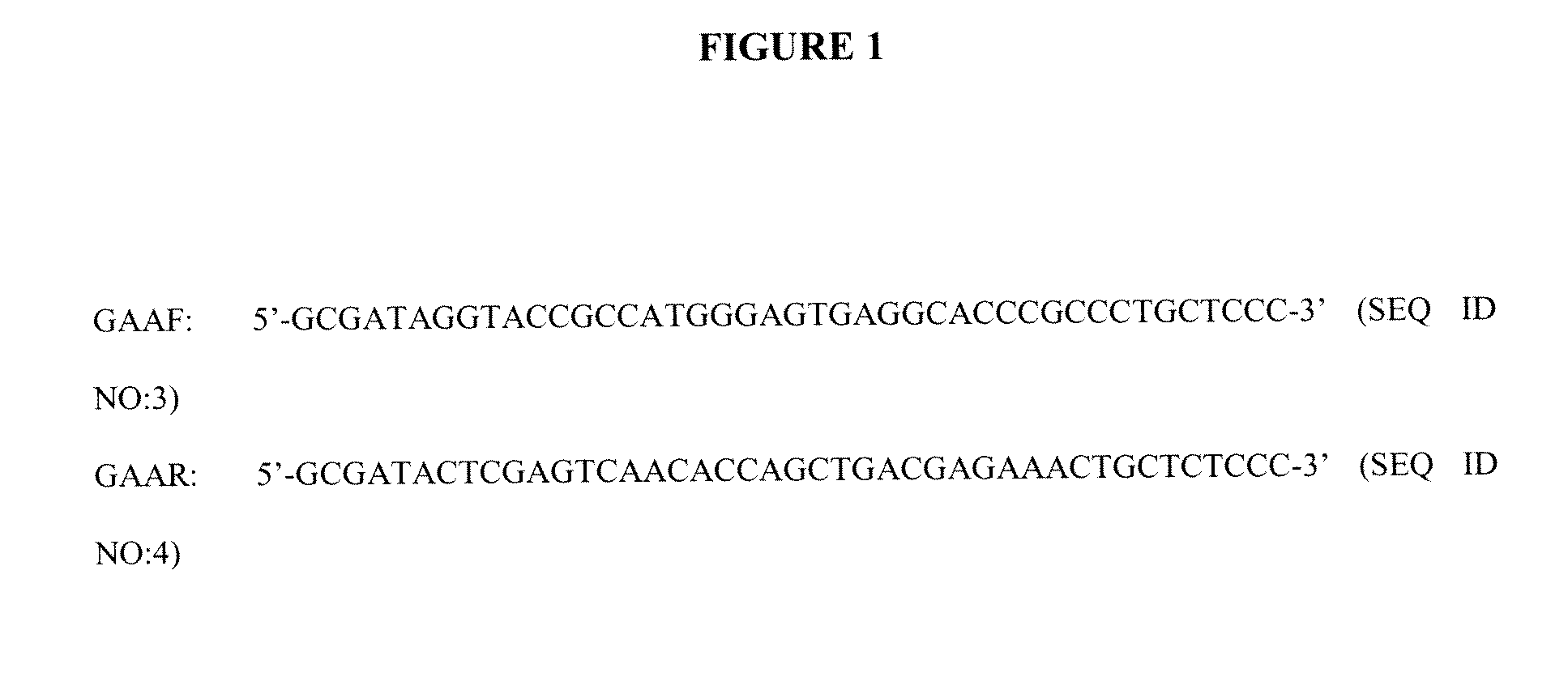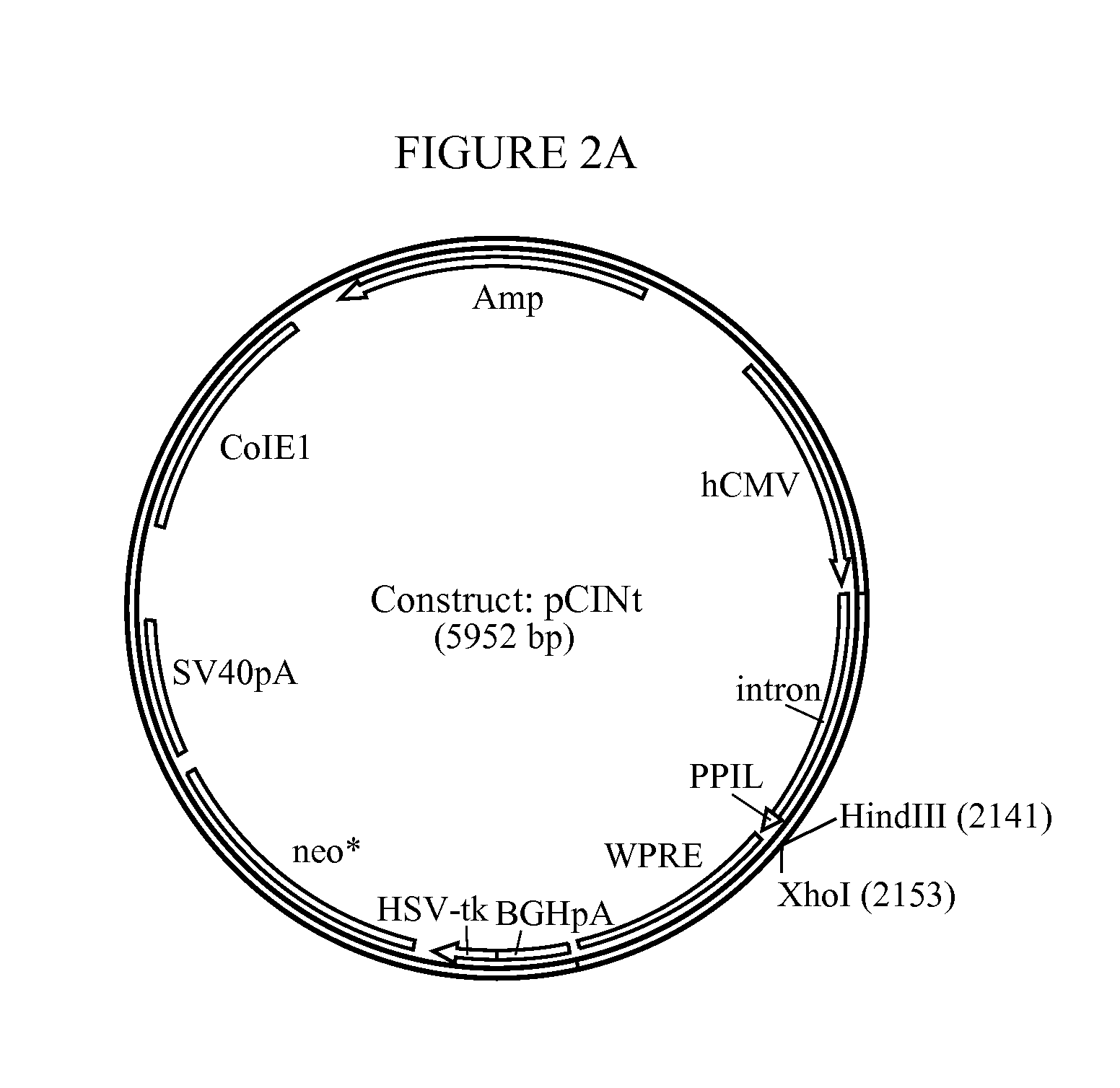Manufacture of Highly Phosphorylated Lysosomal Enzymes and Uses Thereof
a lysosomal enzyme and high-phosphorylation technology, applied in the field of cellular and molecular biology and medicine, can solve the problems of low specific productivity, cellular and tissue damage, swelling and malfunction of the lysosome, etc., and achieve low unphosphorylation level, high yield of phosphorylated, and prevent material loss
- Summary
- Abstract
- Description
- Claims
- Application Information
AI Technical Summary
Benefits of technology
Problems solved by technology
Method used
Image
Examples
example i
G71 Cell Line Development
[0178]The objective was to produce a recombinant, highly phosphorylated lysosomal enzyme that is useful therapeutically at low doses. A cell line was developed that provides improved phosphorylation levels of recombinantly expressed lysosomal enzymes.
[0179]G71 cells (from Rockford K. Draper) were derived directly from CHO-K1 (ATCC CCL-61).
[0180]The adherent G71 cells were maintained at 34° C. in BioWhittaker UltraCHO medium supplemented with 2.5% fetal calf serum, 2 mM glutamine, gentamycin and amphotericin.
[0181]To allow easier use of cell lines for protein production, the adherent G71 cells may be pre-adapted to serum-free growth medium using a protocol for adapting anchorage-dependent, serum-dependent mammalian cells to high density serum-free suspension culture (Sinacore et al., Mol. Biotechnol. 15(3):249-257, 2000), resulting in the serum-free suspension culture adapted cell line, G71S. Alternatively, adherent G71 cells, after being stably transfected a...
example ii
Human Acid Alpha-Glucosidase (GAA) Expression Vectors
[0182]The objective was to produce a recombinant, human acid alpha-glucosidase (hGAA). Mammalian expression vectors were generated encoding hGAA.
[0183]Human acid alpha-glucosidase (hGAA) cDNA was amplified from human liver mRNA (Clontech 6510-1) by high-stringency PCR using the primers designated GAAF and GAAR (SEQ ID NO:3 and SEQ ID NO:4, respectively) (FIG. 1).
[0184]The amplified hGAA cDNA sequence was subcloned using flanking KpnI and XhoI sites into mammalian expression vector pCINt (BioMarin) (FIG. 2). This expression vector contained the human CMV enhancer-promoter linked to the rabbit β-globin IVS2 intron and the multiple cloning site from pcDNA3.1 (+) (Invitrogen, Carlsbad, Calif.). Efficient transcript termination was ensured by the bovine growth hormone poly-adenylation signal. The selection marker was a neomycin phosphotransferase gene that carries a point mutation to decrease enzyme efficiency. The attenuated marker wa...
example iii
Development of G71 Cell Lines Expressing Recombinant Human Acid Alpha-Glucosidase (GAA)
[0194]The objective was to obtain highly phosphorylated recombinant human acid alpha-glucosidase (rhGAA). Expression vectors encoding rhGAA were transfected into G71 cells.
[0195]In a first series of transfections, G71 cells were transfected with linearized pCINt-based rhGAA expression plasmids. Transfections were performed by lipofection with Cytofectene (BioRad) using manufacturer's protocols. Stably transfected cells were selected on UltraCHO (BioWhittaker) supplemented with glutamine, gentamycin, amphotericin and 200 μg / mL G418 (Mediatech). Individual clones were obtained by limiting dilution and screened for activity by enzyme assay (see below). Following selection, stably transfected cells were transferred to JRH302 medium supplemented with glutamine, gentamycin, amphotericin and G418 for expression studies. G71 cells are grown at 34° C. in 5% CO2 and induced at 39° C. in 5% CO2 in the presen...
PUM
| Property | Measurement | Unit |
|---|---|---|
| permissive temperatures | aaaaa | aaaaa |
| temperatures | aaaaa | aaaaa |
| temperatures | aaaaa | aaaaa |
Abstract
Description
Claims
Application Information
 Login to View More
Login to View More - R&D
- Intellectual Property
- Life Sciences
- Materials
- Tech Scout
- Unparalleled Data Quality
- Higher Quality Content
- 60% Fewer Hallucinations
Browse by: Latest US Patents, China's latest patents, Technical Efficacy Thesaurus, Application Domain, Technology Topic, Popular Technical Reports.
© 2025 PatSnap. All rights reserved.Legal|Privacy policy|Modern Slavery Act Transparency Statement|Sitemap|About US| Contact US: help@patsnap.com



